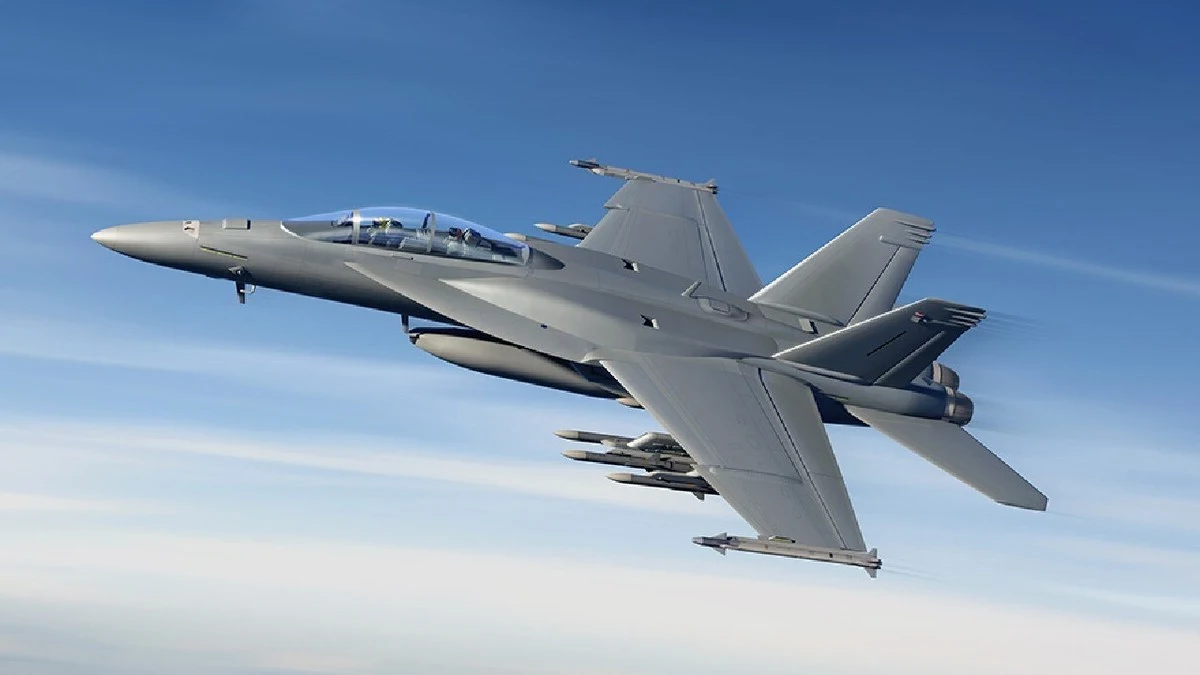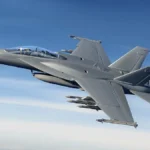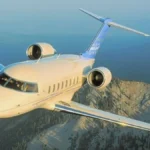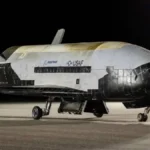The U.S. Navy introduced the F/A-18E/F Super Hornet into fleet service in 1999 to replace the F-14 Tomcat. As the second major development of the F/A-18 program, the Super Hornet provides superior performance across the full spectrum of missions—air superiority, fighter escort, reconnaissance, aerial refueling, close air support, suppression of enemy defenses, and day/night precision strikes. The single-seat F/A-18E and twin-seat F/A-18F serve as high-performance, twin-engine, mid-wing, multi-role tactical aircraft, designed to phase out the F/A-18C and F/A-18D as they are retired from service.
The Navy relies on the F/A-18E/F for fighter escort and interception missions, while the aircraft also maintains critical fleet defense and close air support duties. Its versatility has been further expanded into forward air controller (airborne) and aerial refueling missions, effectively completing the aerial refueling role played by the S-3 Viking. Upgrades such as greater combat radius and improved carrier adaptability ensure that the Super Hornet continues to provide decisive strike capabilities against modern threats.
Block II and Block III Upgrades
In service since 2001, the Block II Super Hornet introduced advanced technologies that strengthened its role as the backbone of the Navy’s carrier air wing. For more than two decades, the type has been the workhorse of the fleet, with the final Block II delivered in April 2020.
The current Block III upgrade extends the jet’s service life, extends its range, and adds advanced systems. These enhancements include a next-generation cockpit, reduced radar signature, and advanced networking capabilities. Boeing delivered two Block III test aircraft to the Navy in June 2020, with full production set to deliver 78 new-build Block III Super Hornets by 2024.
The Hornet and Super Hornet fleets form the strike core for international partners such as Canada, Australia, Finland, Kuwait, Malaysia, Spain, and Switzerland. Several other nations have also expressed interest in this proven, multi-role platform.
Development, Deployment, and Specifications
McDonnell Douglas (now Boeing) unveiled the F/A-18E and F in 1995. The E model carries a single pilot, while the F variant can seat two – serving both training purposes and increasing operational capability by distributing the workload.
Although larger and about 7,000 pounds heavier than the original Hornet, the Super Hornet has reduced maintenance requirements with fewer parts and increased its range by 50 percent. Its first operational cruise occurred in July 2002 when VFA-115 was deployed aboard USS Abraham Lincoln (CVN 72). The aircraft entered combat in November 2002, striking targets in Iraq’s “no-fly” zone.
Specifications
- Primary function: Multi-role strike fighter
- Contractor: McDonnell Douglas (now Boeing)
- Deployment date: First flight, November 1995; IOC, September 2001 with VFA-115 at NAS Lemoore; First cruise on USS Abraham Lincoln
- Unit cost: $67.4 million (FY21)
- Propulsion: Two F414-GE-400 turbofan engines each producing 22,000 pounds (9,977 kg) of thrust
- Length: 60.3 feet (18.5 meters)
- Height: 16 feet (4.87 meters)
F/A-18 Super Hornet Variants and Mission Capabilities
The U.S. Navy currently operates two active versions of the Super Hornet: the single-seat E model and the two-seat F model. Both aircraft provide full multi-role performance, fulfilling nearly every task across the tactical spectrum. Their mission sets include air superiority, precision day and night air attack, fighter escort, close air support, suppression of enemy air defenses, maritime strike, reconnaissance, forward air control, and aerial refueling duties.
Reliability, Dependability, and Industry Excellence
The Super Hornet builds on the F/A-18’s proven legacy as the Navy’s safest and most reliable carrier-based fighter. The Navy has consistently highlighted the program as a benchmark in acquisitions, meeting its schedule, weight, and cost goals since launch. In 1999, the Navy and its industry partners received the prestigious National Aeronautic Association’s Collier Award for successfully designing, building, testing, and fielding the most advanced and survivable fighter jet for carrier operations.
NASA’s F/A-18 Hornet Fleet at Armstrong Flight Research Center
NASA operates three F/A-18 Hornet aircraft at the Armstrong Flight Research Center in Edwards, California, for research missions and pilot training. The center acquired the jets from the U.S. Navy between 1984 and 1991. One of them has a dual-seat cockpit, while the others have a single-seat layout. Known as chase planes, these aircraft act as escorts during research flights and provide critical mission support.
Chase pilots maintain constant radio communications with research pilots, providing an “extra set of eyes” during demanding maneuvers and specific tests. They track flight events in real time and play a critical role in ensuring mission safety.
Chase Aircraft Role and Performance
The two-seat F/A-18 typically performs photo or video chase duties. Its system streams live video directly to Armstrong, enabling engineers to observe the mission. This live monitoring adds a strong safety layer to test flights.
Additionally, Armstrong’s research pilots rely on the Hornet fleet to complete the regular training and flight hours required for every NASA pilot.
Aircraft Details and Performance
The Hornet’s official designation is the F/A-18, highlighting its dual mission as both a fighter and attack aircraft for the U.S. Navy and Marine Corps. The jet is designed and built by McDonnell Douglas, part of Boeing, in St. Louis, Missouri.
The aircraft uses two General Electric F404 turbofan engines, each producing 17,700 pounds (8028.58 kilograms) of thrust. It can fly faster than Mach 1.8 (about 1190 mph). The jet has a wingspan of 40 feet, 4 inches (12.29 meters) and a length of 56 feet (17.06 meters). Its typical gross weight reaches about 40,000 pounds.








Leave a Reply